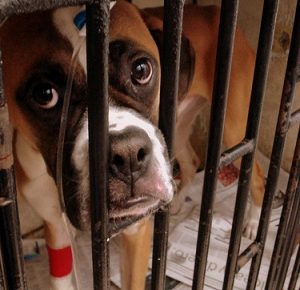
Acne is usually thought of as a teenage skin condition, but cats and dogs can develop acne too. It can be recognized by red lumps called papulis and blackheads, comedones, on the chin and lip area.
Feline acne is much more common than canine acne. The acne spots usually don’t bother your pet. However they can be itchy and sometimes become painful and infected. Dogs develop acne at 5-8 months old while with cats, it tends to begin at a year old.
Feline acne is a life-long condition and seems to come and go. By a year old, canine acne seems to disappear.
Experts are not sure what the exact causes of acne are and believe there are several reasons. Hormones, stress, trauma, allergies, blocked oil glands, excess oil production, disease, illness, poor grooming or other skin conditions are thought to be the culprits.
If you suspect your pet has acne, it’s very important to take your pet to the veterinarian. By taking scrapings and cultures, your vet can determine whether it’s acne or another skin condition such as ringworm, a type of mange, parasitic or fungal.
If diagnosed as acne, there are a number of treatments available. If your vet prescribes an oral retinoid for your cat, it must be closely monitored as it can cause liver damage.
Your vet may recommend some conventional treatments such as benzoyl peroxide, topical antibiotics and steroids. There are herbal and homeopathic remedies which can also assist in the treatment of acne.
You can help treat the condition at home as well. Wash your pet’s chin daily with an antibacterial soap. Use warm compresses to unblock pores. If you suspect flea and tick preparations or household cleaners, try going green. Plastic bowls because they are porous, should not be used for your pet’s food or water. Switch to stainless steel bowls. Clean the area around your pet’s chin and mouth after eating.
As tempting as it may be, please do not squeeze the pimples or blackheads. This can increase the chances of the acne spreading and/or cause infection.
Before using any treatment, consult with your veterinarian.


